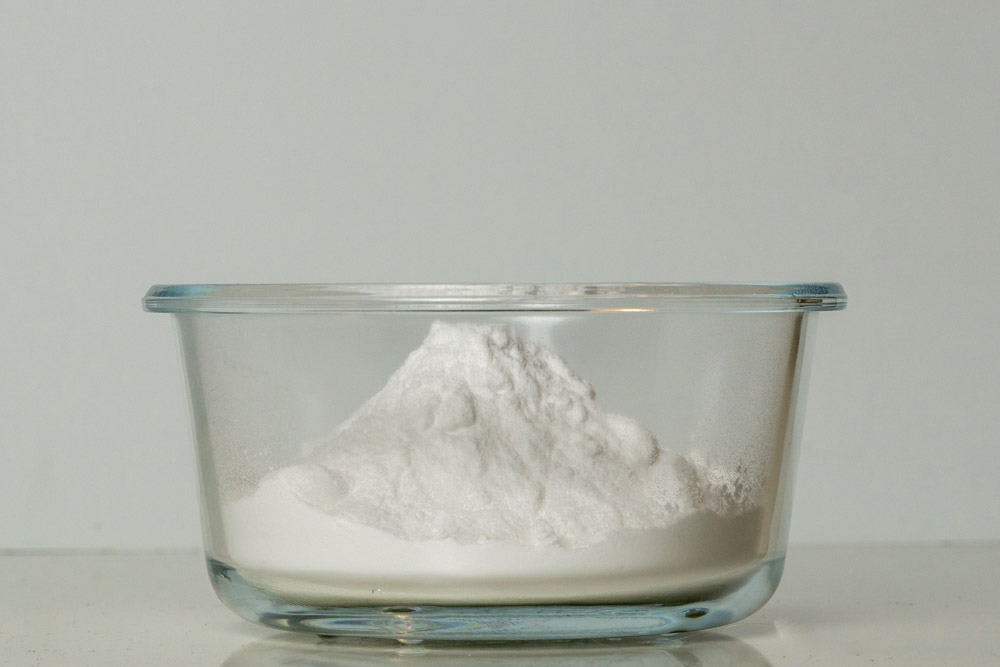Powdered sugar
Up next: powdered sugar. Also referred to as icing sugar or confectioner’s sugar.
From a chemical perspective, powdered sugar is identical to regular white sugar. The only difference is the particle size of the crystals. Whereas in regular sugar you can easily distinguish between the individual crystals, you can’t for powdered sugar. The crystals have been milled to a very small particle size. It makes it into a fine, soft powder.
Powdered sugar isn’t very commonly used in candy making. The small crystals aren’t that important for a lot of candies, since you often start by dissolving all the sugar in water (as we’ll discuss later).
That said, it’s good to know where it fits in your sugar pantry.
Because of the tiny sugar particles, powdered sugar is very hygroscopic. This means that it easily attracts moisture. This can cause it to clump. It’s why a lot of manufacturers add ‘anti-clumping agents’. These are ingredients that absorb the moisture, to prevent the sugar crystals from doing so. A commonly used example is starch. It can cause powdered sugar to behave a little differently than regular sugar when making candy. Check your label to see whether something else besides sugar has been added.

